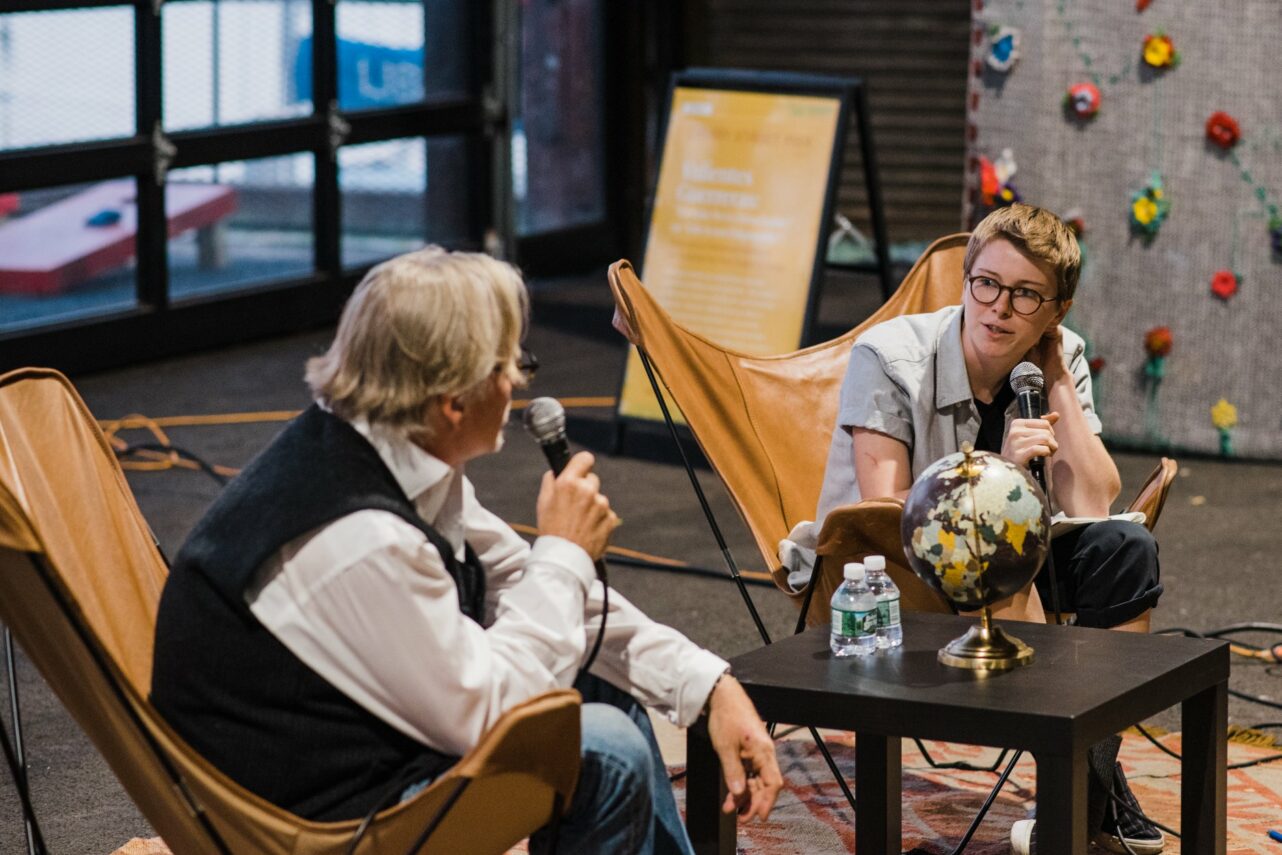India Abbott, an artist-in-residence at Cherry Street Pier, whose work focuses on time-based media, spoke with CityWide Stories about her work, the resurgence of analog photography and how its processes can transmit contemporary messages, plus how Philadelphia and its changing landscape shapes her work.
What is your workflow like?
I am still finding my feet in the freelance world. I juggle [being a] filmmaker with editing, production assisting, and projection work. I can go from running projections on a futuristic Scandinavian space opera, to prop styling for [an] everyday America pharmaceutical commercial. It’s hard to find a routine or norm, but I do know I’m learning a lot, and meeting and working with inspiring people.
How do you work with older photography instruments (gelatin prints, 16mm film)?
Affordability is a big factor for me. I can’t simply shoot everything in 16mm sadly. When I can, I shoot 16mm film, then I digitize it so I can edit and project it digitally. Digitizing it also allows me to alter and distort the physical film; for example, with hand painting or color washing. So, one analog document can become several iterations. I experiment with incorporating 16mm into installation spaces, so that the flickering imagery becomes a layer of an environment/experience.
There’s a wave of nostalgia around printed photos now. What’s your take on this?
Analog is so much about tactile processing. I think it’s neat that people are turning back to a tactility that’s been lost. Things like “film filters” or effects I can’t help but roll my eyes [at]. I mean, it just seems unrelated to the actual origins of film when it becomes an immediate algorithm. I feel like the analog aesthetic is coming back, but not the actual arduous processing. Thanks to the Halide Project, soon Philly will have a community dark room, so maybe soon [people will] fall back in love with the chem so to speak.
Something that I struggled with in art school was, I was one of the only ones producing analog work. It was really frustrating to feel like in critiques the only feedback I got was about “nostalgia.” Eventually it started to feel gendered, and like not actually fruitful feedback. This is the most immediate response to 16mm these days; “nostalgic” because it’s not video, it references a different time. But part of me is like why perpetuate pushing analog away in relevance. What if it’s not just nostalgic? What if it’s as present or futuristic as virtual reality? After all, we wouldn’t have one without the other. It makes sense that there’s a nostalgia about analog mediums, but that doesn’t mean they can’t still bare a powerful contemporary message.
How does Philadelphia inspire you as an artist?
Philadelphia inspires me in the sense that it’s my home, it has always had a down to earth nature. People are genuinely curious and excited about new things here, in a palpable way. It feels like there’s a lot of eager energy in Philadelphia right now, in terms of preserving what we have and bringing new elements to the city. I’ve been excited to see the DIY culture grow. Philadelphia has a fantastic zine culture and collaborative spirit.
You and your father, photographer James Abbott, recently spoke at an Urban Consulate event. How did that discussion go and what did you want to get across to the audience?
We were rather nervous about that talk, in some sense I felt that I wasn’t sure I had the authority to be up there. I tried to be transparent that in my emerging practice I still have more questions than answers. I have found it really confusing trying to forge a freelance creative life in Philadelphia during this time of enormous change. Something I wanted to get across is the double-sided nature of this seeming ‘revitalization’ of the city. On the one hand parts of Philly look better than ever; on the other hand, poverty is not decreasing, vulnerable communities are being displaced, and a horrifying opioid crisis is underway.
As an artist is makes me feel torn, like really my energy should be going to preserving the Philly I knew and helping the vulnerable that are being silenced by the rapid development. It makes what I am doing more political, especially at a public crossroads like Cherry Street Pier.
It’s hard feeling like the most palpable market opening up for artists is empty condo walls especially with time-based media when I’m not trying to sell one image … or anything really, just trying to express myself through analog and experimental means.
What advice do you have for those beginning their artistic careers?
I’m curious about ways of communicating that aren’t just Instagram; it feels like marketing on social media has capitalistic motives. I’m more interested in artists seeking platforms and spaces to genuinely connect about their processes, struggles, and questions. Not just finished products. So, the advice I’m trying to follow and give myself is about giving and making space to connect with others and really talk through vulnerabilities and struggles in processes, as well as successes. I think what we must do before it’s too late because of rapid development is claim physical space for these kinds of exchanges.
Lead photo by Heather McBride Photography for Urban Consulate Philly.

